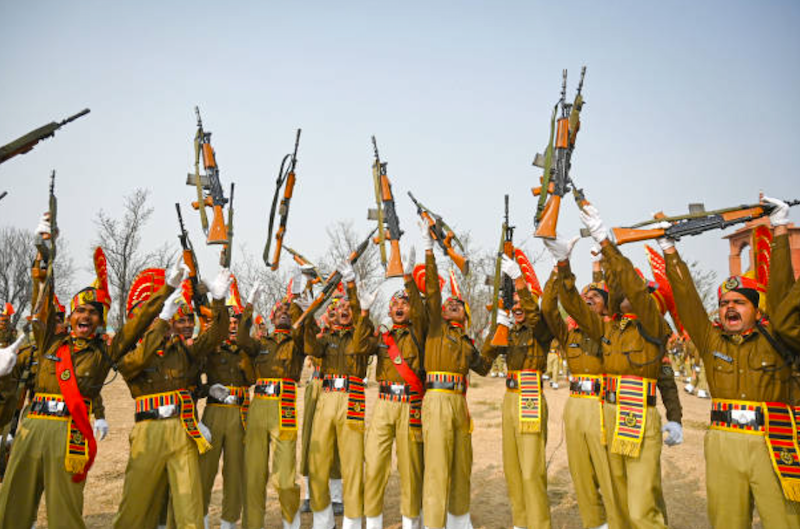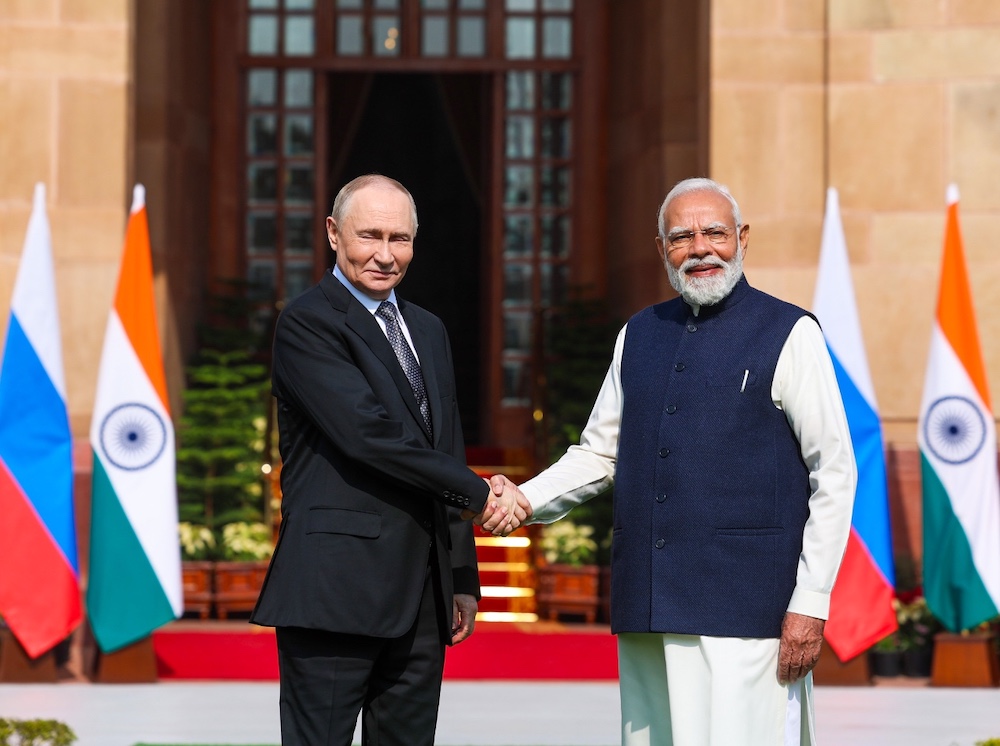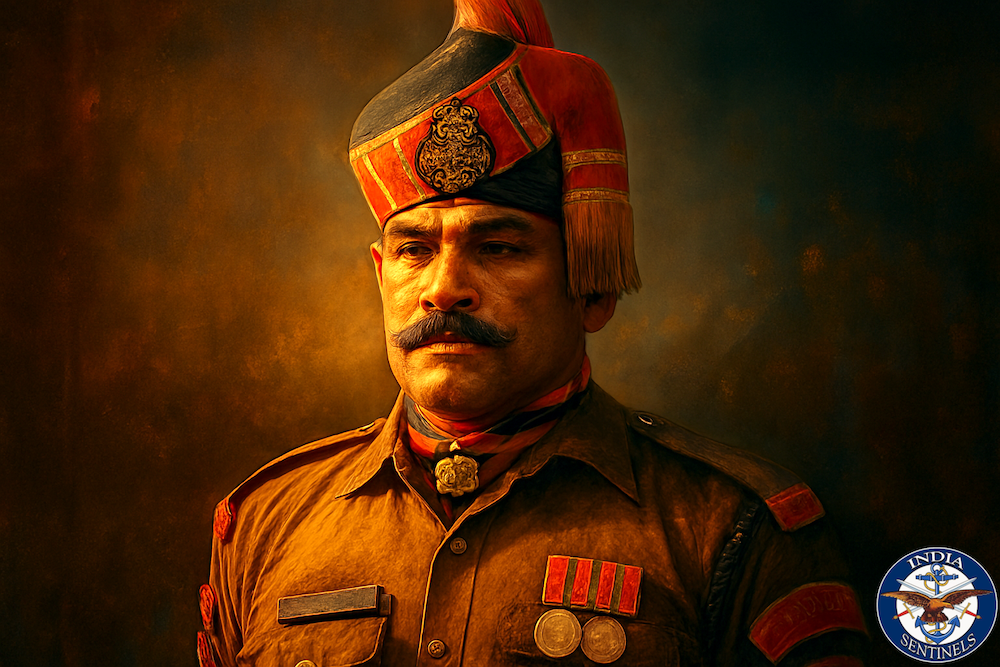 Fresh BSF recruits celebrating after their passing-out parade in Srinagar. (File photo for representation.)
Fresh BSF recruits celebrating after their passing-out parade in Srinagar. (File photo for representation.)
Morale and motivation are the vital cornerstones of any efficient force, and the CAPFs are no exception. They are intertwined; neglecting one weakens the other, impacting professionalism, creating chasms between personnel and command, and breeding organizational stress. Therefore, fostering a positive relationship between the two is paramount.
The command and leadership need to recognize that they need to work to reduce stress among their men by having the knowledge of men, trusting subordinates, enforcing strict discipline, accepting sound advice, setting personal example, and through maintaining cheerful demeanour despite adversities.
Life in CAPFs is undeniably arduous for all ranks, especially for personnel below officer rank (PBOR). Their duties encompass border guarding, internal security, election conduct, VIP security, and counterinsurgency operations, such as combating militancy in Jammu & Kashmir and northeast and left-wing extremism in the hinterland. This multifarious workload, coupled with hostile environments and limited time for personal obligations, training, and rest, inevitably leads to immense stress.
Also read: Hamas raid in Israel – lessons for India in border guarding
The border-guarding CAPFs also have a primary role in addition to other commitments. Nature of duties and hostile environment in which CAPFs function affects mental and physical health of the personnel, social life in terms of time available for social obligations, and looking after family and children. Multifarious duties leave little time for training, structured rest, and relief, which invariably leads to stress.
Stagnation further compounds stress, manifesting in indiscipline, increased voluntary retirements and resignations, suicides, and even fratricides. This trend highlights the urgent need to address factors, like work environment, stagnation impacting social standing and self-esteem, family obligations, and physical- and mental-health concerns.
The government has recognized these issues, as evidenced by various studies and parliamentary responses. For example, over a decade ago, in 2012, the Janata Dal (United) Lok Sabha member representing the Supaul constituency, Vishwa Mohan Kumar, asked an unstarred question (No. 3528) whether the government had sponsored any study by the Indian Institute of Management, Ahmedabad on the service and living conditions of the CAPF personnel, and if the government received any report of the said study. He also asked the government to present the details and salient features of the report, if there was one. Kumar further asked the reaction of the government on the observations made in the report (if such a report existed) and remedial measures taken to tackle issues related to service and living conditions of the CAPFs.
Read also: Command duality in border guarding is against national security
In reply, the-then junior home minister RPN Singh, on March 19, 2013, stated that such a study did indeed take place. He said the study on “occupational stress in paramilitary forces (BSF & CRPF)” was conducted by IIM-Ahmedabad in 2012. The purpose was to find out antecedents and consequences of stress in the two CAPFs, understand the role of intervening variables, like emotional intelligence and resilience on the outcome of stress, and to recommend and suggest remedies to overcome and mitigate the level of stress.
He further informed that consequent to submission of report, remedial measures were taken to tackle the various issues related to service and living conditions. These measures included a transparent, rational, and fair leave policy, grant of leave to force personnel to attend urgent domestic problems/issues. It also suggested regular formal and informal interactions with troops, revamping of the grievance redressal mechanism.
Furthermore, it suggested regulating duty hours to ensure adequate rest and relief, improving living conditions through provision of basic amenities, better medical facilities, yoga and meditation, recreational and sports facilities, welfare measures, like Central Police Canteen (CPC), and giving status of ex-CAPF personnel to retired CAPF personnel to boost morale for better identity and community recognition.
Read also: India-Myanmar border guarding needs a fresh approach
Here, it would be pertinent to mention that there was nothing new in the report of the study group that was not known to CAPFs. Measures elaborated were there in existence, implemented as part of their policy. Certainly, the tag of IIM on difficulties of CAPF troopers in duty regimen brought back focus on the need to lay greater emphasis on the redressal mechanism. Existing policies were reemphasized.
However, there was a need to bring in permanent measures to mitigate stress, like improvement in work-related environment in terms of duty hours and rest and relief, strengthen structured basic and in-service training, improve promotional avenues, improve medical infrastructure and basic amenities.
While several measures aiming to improve service conditions have already been implemented, like transparent leave policies, grievance redressal mechanisms, and improved living facilities, their effectiveness has been limited. For instance, existing leave policies might not adequately address family obligations specific to harsh service environments. Similarly, while recreational facilities exist, their accessibility and impact on overall stress reduction might be inadequate. This necessitates a deeper analysis of the existing measures and their specific limitations to design truly effective solutions.
On March 29, 2017, replying to an unstarred question (No. 3094) of Neeraj Shekhar in Rajya Sabha concerning the increase in resignations and voluntary retirements from the CAPFs, the-then junior home minister Kiren Rijiju replied that for a three-year period from 2014-15 to 2016-17, there have been 16,463 voluntary retirements and 5,016 resignations, bringing the combined total to 21,479.
Read also: Manipur crisis is becoming national threat, govt must act now
Therefore, in three years, there was avoidable wastage of almost 20 battalions. The reasons given were again similar, like personal and domestic reasons, including children/family issues, health/illness of self and family members, social/family obligations, etc.
It is important to accept the reality that voluntary retirements and resignations are the byproducts of harsh and arduous service conditions. They are linked to the service environment and cannot be detached from service as they are attributable to service requirements and need to be looked at that way for a realistic solution.
However, the measures enumerated to improve service conditions have been same and repetitive over a period, as can be made out from reply of the current junior home minister Nitya Nand Rai in Rajya Sabha, on December 6, 2023.
According to the data provided by the minister, 46,930 personnel from the CAPFs, including the Assam Rifles, took voluntary retirement between 2019 and 2023, with the BSF witnessing the biggest exodus with 21,860 personnel exiting the force through this route. The major reasons cited for voluntary retirement were personal and domestic. Comparative analysis of data shows that there is continuous increase in the cases of voluntary retirement and resignations in CAPFs.
The data must set off alarm ringing and steps must be initiated urgently to take corrective measures to bring down the cases of voluntary retirement and resignation. For that, the first step is the need to accept that voluntary retirement and resignations are intertwined and interconnected to service conditions, further compounded by acute stagnation.
Read also: Implement professional protocol for top posts in border-guarding CAPFs
The measures detailed by the ministers have been executed in the BSF since its raising and have played a measure role in effective man management. Certainly, these are implemented by other CAPFs too. However, the complexion of the national-security paradigm in terms of the difficult and hostile internal and external security environment, climatic conditions, and the threat environment is dynamic.
With ever-increasing national security commitments, CAPF troops encounter tremendous stress. This stress further multiplies with dilution of the joint-family system and coming up of nuclear families with no support system available to meet familial and societal obligations due to duty commitments. Therefore, there is a need for transformative structural and organizational changes.
There is an urgent need for an in-depth study and analysis to brainstorm issues, which affect morale and motivation. It is a fact that in pyramidal organizations, like the CAPFs, it is not possible to satisfy everyone with promotions.
Let us do an analysis.
There is a system of cadre review undertaken in the CAPFs. Does it suit the combat needs of the CAPFs? The cadre review is designed to address stagnation in the force. Is it able to do so?
The current system of cadre review is designed for civil services and is ill-suited for the combat needs of the armed forces, including the CAPFs, which are peculiar. The current cadre review system does not address combat issues but rather creates stagnation and dilutes their combat effectiveness. It is tailored for civil services and not for uniformed services.
Read also: Pulwama attack needs answers to avoid politicization, end speculations
Upgradation of ranks lead to a dilution in the work profile and professionalism. The need is to address the stagnation and financial upgradations in such a manner that it bolsters the morale and motivation and combat effectiveness in the personnel, which in turn will strengthen the country’s national security.
The CAPFs need to revisit their command-and-control structure at the battalion level and hierarchical set-up to make it more responsive and efficient for man management. It will certainly bolster professionalism. An analysis is required on whether the present structure requires need-based restructuring to strengthen professionalism and man management, how to go about it and how it will help in raising morale and motivation in the personnel and their satisfaction level, and address issues of attrition, stagnation, suicides, and fratricides.
There is a need to go for measures that bring changes in the ground situation.
First in the series is to revive the old rank structure of lance naik and naik and do away with the rank of assistant sub-inspector (ASI). This revival will go a long way in addressing stagnation.
Then, tinker the modified assured “career progression” scheme. Instead of its applicability after 10, 20, and 30 years of service, link it with the residency period of promotion. Practically, there will be no stagnation for non-gazetted ranks.
After that, confer honorary rank of last upgraded pay at the time of superannuation. This will bring down voluntary retirement and help arrest attrition largely with no financial implication. For officers, implement non-functional financial upgradation (NFFU) to address stagnation as per the Department of Personnel and Training (DoPT) norms.
These measures will address attrition and strengthen the combat effectiveness of the CAPFs. There will be no need to tinker with the basic command-and-control structure with every cadre review. These measures, if taken, will ensure originality of the command-and-control structure, and possibly obviate the need to tinker with command structure to address stagnation.
In addition, there is also a need to carry out an analysis of teeth-to-tail ratio in CAPFs and take measures to enhance it.
Stress beyond tolerable limits is emerging as a major factor affecting mental and physical health of CAPF personnel. At a cursory glance, it appears to be one of the main causes for the astronomical increase in voluntary retirements and resignations in CAPFs. However, it is manageable. To tackle this, the leadership of the CAPFs and the government must take long-lasting measures to reduce stress among men in CAPFs.
It can only be through welfare, which provides for the mental and physical needs of the personnel, and policy changes, which enhances the satisfaction level of the organization by enabling the improvement of organizational efficiency and professionalism by addressing the issue of stagnation and lack of structured training. This will, in turn, keep the personnel fit and ready to always give their best.
The CAPFs’ leadership need to understand that real and true welfare is the product of man management – a sacred function of command and leadership.
Disclaimer: The views expressed in the article are the author’s own and don’t necessarily reflect the views of India Sentinels.
Follow us on social media for quick updates, new photos, videos, and more.
Twitter: https://twitter.com/indiasentinels
Facebook: https://facebook.com/indiasentinels
Instagram: https://instagram.com/indiasentinels
YouTube: https://youtube.com/indiasentinels
© India Sentinels 2022-23










